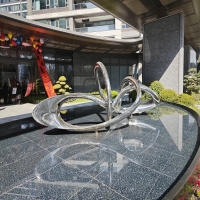Welcome to the website for landscape facilities products and knowledge.
What are the best practices for anchoring a landscape bar counter to prevent movement or tipping?
Properly anchoring a landscape bar counter requires both technical precision and understanding of environmental factors that cause movement. Begin with site preparation by creating a stable, level base using compacted gravel or concrete footings that extend below the frost line in colder climates. The depth should typically reach 12-18 inches for gravel bases or 24-36 inches for concrete foundations depending on soil conditions.
For permanent installation, use galvanized or stainless steel structural brackets to secure the counter to its foundation. These should be corrosion-resistant and rated for outdoor use. Install at least four anchor points positioned at critical stress locations - typically near corners and at midpoints of longer spans. For masonry counters, use wedge anchors or sleeve anchors that penetrate at least 3 inches into concrete substrates.
Weight distribution plays a crucial role in stabilization. Incorporate built-in ballast by designing hollow sections that can be filled with sand or gravel during installation, adding substantial mass that resists tipping. For larger installations, consider embedding rebar into footings that connects to the counter's internal structure.
Environmental considerations include accounting for soil drainage to prevent erosion beneath the foundation. Create a slight slope (1-2%) away from structures for water runoff and consider French drains if installing in areas with poor natural drainage. In high-wind areas, increase anchor quantity and consider diagonal bracing to the supporting structure.
Regular maintenance checks should include inspecting anchor tightness seasonally, particularly after freeze-thaw cycles in colder climates. Look for cracks in concrete foundations and ensure drainage systems remain unobstructed. For wooden counters, check for rot or insect damage that could compromise structural integrity near anchor points.
Professional installation is recommended for complex setups involving utilities like plumbing or electrical. Always check local building codes for specific requirements regarding permanent outdoor structures, particularly regarding footing depth and anchoring specifications in your region.
Related search:

Recommendation
Abstract art sculpture, stainless steel metal sculpture, large-scale water feature sculpture